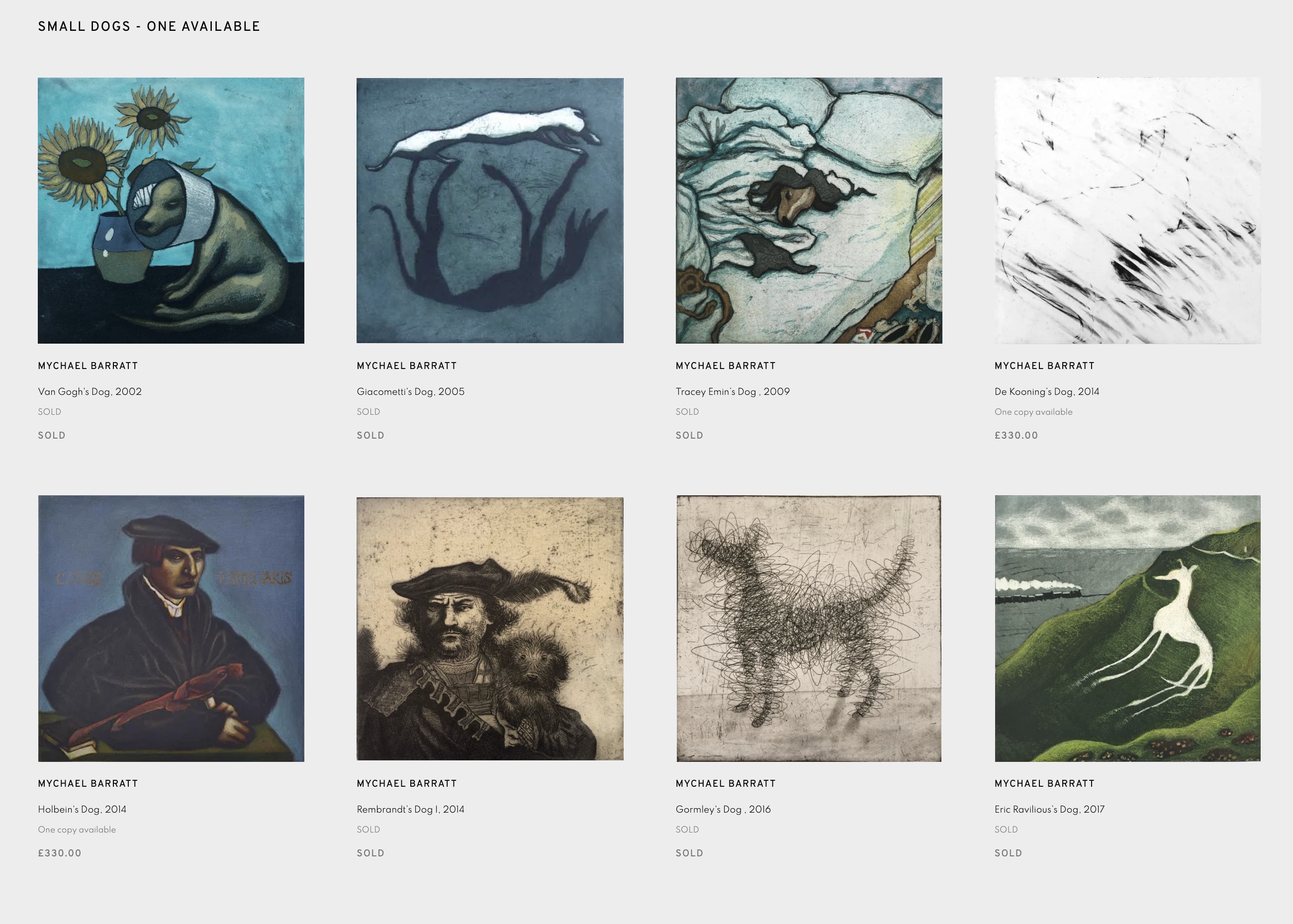2022 global saw print sales pass $500m for the second consecutive year, with the value of sales turnover and auction transactions doubling over the last decade. Meanwhile, ecommerce now accounts for £11bn of the art market's total $67.8bn value - double 2019's $6bn.
It's the process itself, along with the reputation of the artist, that makes prints desirable and highly sought after by collectors. With that in mind, let's discover how prints and editions can be the making of your online success.
Why prints and editions are a gateway to ecommerce success
Over the last few years, partly inspired by necessity during the pandemic, gallerists have discovered the benefits of selling art online, including much lower overheads, easy scalability, and access to a global audience. And, selling prints and editions is one of the best ways to enter the ecommerce world to unlock a more consistent source of revenue. Because a) they're much easier for you to sell, and b) they're much easier for your collectors to buy.Prints usually fall below Anti Money Laundering (AML) thresholds (works valued under €10,000), meaning that there's no need for the buyer to be subjected to Know Your Customer (KYC) checks. Additionally, that lower price point makes them a much more accessible purchase for the average collector. Plus, the fact that the price is usually displayed online for prints (while the price for originals is often hidden behind an 'enquire' button) vastly increases the chance of a sale.
Cost aside, a 'democratisation' of art is present throughout the online buying experience. Firstly, there's no need for the buyer to enter a physical gallery. This unlocks a literal world of art for collectors, who are no longer restricted to purchasing only works from local galleries, and can enjoy the convenience of buying art without leaving their front door. Meanwhile, galleries have access to an enormous audience of art lovers, vastly increasing the chance of sales.
Secondly, as prints are usually 2D and can easily be displayed in a digital format, they're perfect for online viewing and Augmented Reality, presenting a truer representation of the actual work. And finally, a run of prints will usually be the same dimensions, so galleries can easily standardise shipping – there's no need for special or expensive options for enormous works.
As well as a new revenue stream, online print sales give galleries the chance to tap into a new customer base, and an opportunity to form valuable, long-term connections with art lovers that can lead to more sales and bigger purchases in future.
How to make it work: ecommerce strategy
The following steps will set you up for ecommerce success:
-
Firstly, define your target market. You need to know what kind of art/artists they want to buy, how much they're willing to spend, and how they like to pay. This is the cornerstone of creating a great online experience that maximises sales.
-
Now it's time to create the perfect online home for your prints and editions, one that's tailored to your clientele, compliments the works, provides a user-friendly experience, and encourages discovery. Make sure to create detailed product pages with high quality imagery and a quick, easy and secure checkout experience. See here for a good example.
Tip: Thanks to Artlogic's range of template websites, you don't need any coding experience to create a professional-looking online store for your gallery. -
It's no good just having an online presence. You need to shout about it with an effective digital marketing strategy. Target your ideal customer on their preferred social platforms. For example, Millennials are the largest demographic on Instagram, which, as an image-focused platform, lends itself perfectly to art marketing. Further, according to Artsy's Art Industry Trends Report, 60% of respondents chose email newsletters as their most important marketing channels. It's best to define how your audience consumes their content, and then tailoring your strategy accordingly: focus your efforts where they'll be most effective, rather than attempting to reach the maximum number of people with generic content.
Tip: Consider using analytics tools such as Meta Pixel for better insights on any social advertising performance, or create specific email lists of engaged collectors so you can generate a buzz when you've got new stock back in. -
Once you've got the basics sorted, explore how you can incorporate technology like Augmented Reality into your online gallery experience. Prints are the perfect medium for AR as they allow people to see how the works will appear within their own home. Potential buyers can use their phone or tablet to place a digital version of the piece on their wall to get a sense of its scale and suitability.
A look elsewhere:
 Source: eamesfineart.com
Source: eamesfineart.com
Eames Fine Art is a great example of a website succeeding in the prints and editions ecommerce space. The website layout and design elements are minimal and unintrusive, placing emphasis on the artist and their works in much the same way a bare gallery space does. Essential details about each print are provided but nothing is surplus, and users have the option to ‘Add To Cart’ or ‘Enquire’ for further information.
With prints available for under £200, works are at an affordable price point for the average collector, while a ‘last few copies available’ implies scarcity and generates a sense of urgency, which adds to the desirability of the work.
Overall
With over a third (38%) of galleries reporting that their volume of online sales increased in 2022 compared to 2021, online art sales are accounting for an ever larger portion of the global art market, and print sales are smashing records year-on-year. So, whether you’re an experienced online art seller or just dipping your toe in the world of ecommerce, there’s never been a better time to invest in your online offering and reap the rewards.
Just remember, success is downstream from a great strategy, which is why it’s important to clearly identify your target market and to define your goals. From there on in it’s a case of monitoring, adapting, and improving your strategy until you’re running a smooth operation.
For more info on how to find success with an online art store, check out our online store masterclass, which includes helpful tips on everything from creating compelling product pages to developing a winning marketing strategy.






